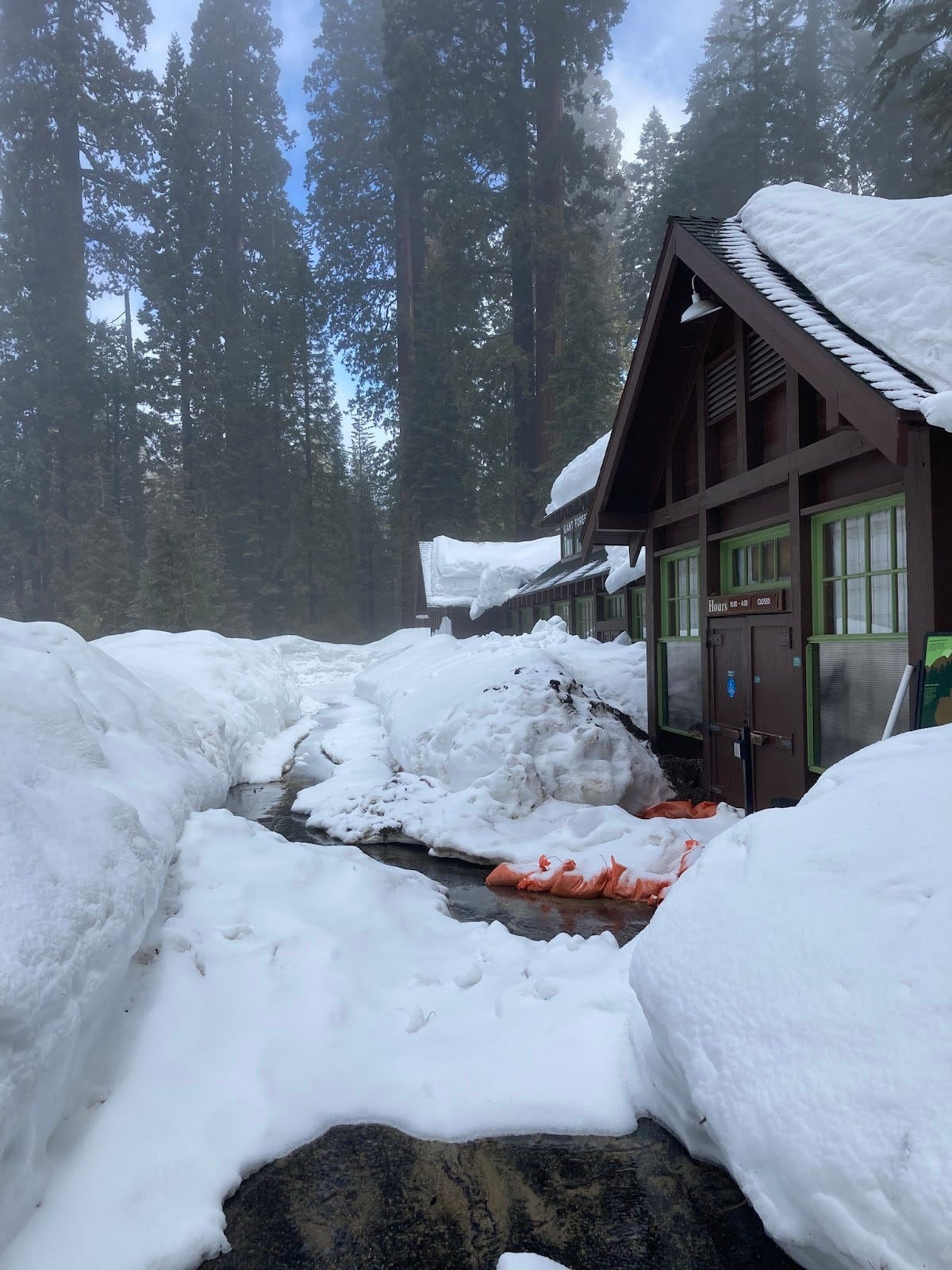Vacation planning: Where to see giant sequoia
When March and April become June and July (maybe)

I FOLLOW A FEW Facebook pages that people use to help plan vacations, and there have been so many sad stories there lately from people coming from around the world with hotel reservations in central California. Many dreams of seeing giant sequoia trees at Yosemite or Sequoia national parks this month were shattered, and even April reservations may leave travelers seeking alternative destinations. And May? Who knows?
I am hoping to get to see the Placer Big Trees grove this year, but it’s not really clear to me whether Tahoe National Forest still has the grove under a Forest Closure related to damage from 2022’s Mosquito Fire.
It’s the northernmost grove of giant sequoias and also the furthest from another grove with only six living sequoias — two larger trees growing by themselves and four smaller trees in a group — in addition to two large trees that are said to have fallen in 1861. These trees are also genetically distinct from those in other groves. The 2022 fire came within about a mile and a half of the grove, and firefighters took measures to protect them before rain helped put out the fire.
Calaveras Big Trees State Park has managed to keep access to winter recreation, particularly snowshoeing, throughout most of the winter, and there are plenty of Big Trees and lots of history there. I imagine that other areas will need to remain closed for a time as park officials assess and clear damage to trails. And they’ll be preparing for ambitious burning planned for this year that may impact visitor access.
Although Yosemite National Park has managed to reopen the park intermittently with limited access, Mariposa Grove — where many giant sequoias grow — is currently closed to all entry due to storm damage. In addition to storm damage, the park has many projects planned for this year that may impact visitor access — more info HERE.
Sierra National Forest, home of the McKinley and Nelder giant sequoia groves, has many forest closures and there is currently no public access to the groves.
Sequoia and Kings Canyon National Parks — jointly administered and commonly referred to as SEKI — are all entrances are closed. As Superintendent Clay Jordan said, recovery in those parks “is going to be a long haul.”
On Sequoia National Forest — and Giant Sequoia National Monument — various forest closure orders remain in place. At the southern end of the forest, officials have been working to reopen recreation at Lake Isabella. But area to the north, where giant sequoias grow, are either still under deep snow or can only be accessed by compromised roads. I suspect that Trail of 100 Giants may be one of the easiest-accessed places to see giant sequoias later this spring and into early summer — but not yet. Even if the roadway from the south might be open, intermittently, to provide access to communities, the trailhead and parking areas remain closed.
There are also giant sequoias at SQF’s Wishon Campground — one of my favorite places to camp — but it’s also closed due to extensive storm damage.
And the southernmost giant sequoia grove, Deer Creek Grove, is also closed. Even in a normal year, the road is often not opened until mid-June. Currently, the nearby community of Pine Flat Village is under an evacuation order. I imagine that reopening the road to the grove won’t be a high priority for the Forest Service this year.
The 2023 season won’t be the best for people who want to visit giant sequoias, but I suspect that at least part of the loss of tourism income in the gateway communities will be offset by business travel — public safety staff and workers contracted to help clean up the mess.
Still, I’m hoping to visit at least a few giant sequoias in the coming season, and I’ll share photos here. — Claudia Elliott



